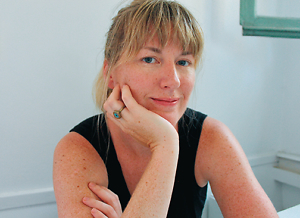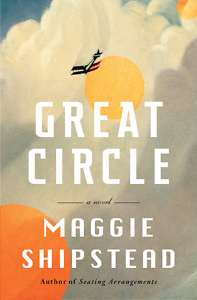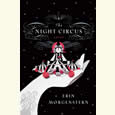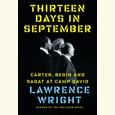The Curvature of the World
Great Circle explores the interconnected lives surrounding a famous woman aviator
“I was shaped to the earth like a seabird to a wave,” writes Marian Graves — the aviator at the center of Maggie Shipstead’s ambitious novel Great Circle — in a logbook found at an abandoned weather station in the Antarctic. “I have made a promise to myself: My last descent won’t be the tumbling helpless kind but a sharp gannet plunge — a dive with intent, aimed at something deep in the sea.”

In a century-spanning narrative, Great Circle traces Marian’s single-minded pursuit of flight and the lives of numerous characters connected to her. Their stories offer something like intersecting coordinates on the map of Marian’s life, which culminates in her famously tragic attempt to fly a record-setting longitudinal “great circle” around the planet in 1950. While Marian disappears over the Pacific during the final leg of her route, her story continues to resonate with a certain slice of the public, creating fodder for conspiracy theories and artistic reinterpretation.
Providing a focal lens on the sheer scale of Shipstead’s story is the connection between Marian and Hadley Baxter, a scandal-ridden actress who lucks into the chance to portray Marian onscreen more than 60 years after her famous flight, thereby salvaging Hadley’s career and possibly pivoting her life in a less self-sabotaging direction.
Drawn to Marian’s story as a child, Hadley recognized salient but coincidental parallels between them. Hadley had lost her own parents in a plane crash. Both women were raised by an uncle. Now, facing an uncertain future, the role of Marian tugs at something deeper inside her. “I needed the relief of being someone who wasn’t afraid,” Hadley admits. “She was like me but wasn’t. She was uncanny, unknowable, except for a few constellations I recognized from my own sky.”
Marian does resist being known, especially when other people persist in misunderstanding her or trying to pin her down. As infants, Marian and her twin brother Jamie are rescued from the wreck of a luxury ocean liner and brought to the wild forests of 1920s Montana, where their well-meaning but troubled uncle lets them roam freely.
 But the moment Marian reaches “an age when the future adult rattles the child’s bones like the bars of a cage,” her pursuit of flight takes permanent hold, perplexing those around her. In captivating chapters focused on Marian’s adolescence, her determination to become a pilot blazes across her whole being: “She couldn’t fathom that others did not see her for what she would become, that she did not wear the fact of her future like some eye-catching garment.”
But the moment Marian reaches “an age when the future adult rattles the child’s bones like the bars of a cage,” her pursuit of flight takes permanent hold, perplexing those around her. In captivating chapters focused on Marian’s adolescence, her determination to become a pilot blazes across her whole being: “She couldn’t fathom that others did not see her for what she would become, that she did not wear the fact of her future like some eye-catching garment.”
Willful and resourceful, Marian leaves school to work, saving money for flight lessons. But her desire also makes her vulnerable. Soon she makes a risky bargain with a powerful bootlegger named Barclay Macqueen. Barclay offers her access to her dreams, but at a cost that young, inexperienced Marian cannot fully discern. She stumbles into more dangerous territory than her childhood dreams ever conjured.
Propelled by a vast but assured narrative sweep, Great Circle encompasses a myriad of intersecting worlds. As a pilot-for-hire, Marian maneuvers icy, treacherous mountain ranges in Alaska. Her brother Jamie throws himself into the artist’s life, trying to earn a living without betraying his strong but evolving principles. Both twins enter the battle zones of World War II — Marian in Spitfire cockpits over Europe, Jamie at ground level in the Pacific. Hadley weathers the surreal daily aggression of a modern-media siege. In each case, Shipstead has imagined and researched her settings in exhaustive detail.
Shipstead’s last novel, 2014’s Astonish Me, displayed her gift for fine details and her strong grasp of emotional intelligence. But Great Circle requires a far grander, deeper vision. Here, Shipstead has strengthened and expanded her insight into her characters’ interior worlds alongside the widening scope of her subject matter. Her achievement lies in what her own character, Jamie, strives to capture as he paints portraits: “the tidal zone where a person’s inner and outer selves wash together.”
At 600 pages, Great Circle also reflects Jamie’s unappeasable aim to fit the world’s “too-bigness” onto canvas. While he knows that it can’t be achieved, this desire fuels his vision. Likewise, Marian writes in her final voyage’s logbook: “I knew the horizon could never be caught but still chased it.” Marian recognizes that her plan to pilot the circumference of the globe springs from her “own inherently unachievable desire to understand the scale of the planet, to see as much as can be seen. I wish to measure my life against the dimensions of the planet.”
Great Circle itself seems to take on the curvature of the world, which shapes the contours of Shipstead’s complex and richly expansive story. The act of reading of this novel creates the cumulative effect of an endless unfolding, a single life’s possibilities never exhausted. Like Marian’s eye on that relentlessly chased horizon, Great Circle voyages onward, yielding indelible scenes of adventure, intimate heartbreak, and transcendent longing.

Emily Choate is the fiction editor of Peauxdunque Review and holds an M.F.A. from Sarah Lawrence College. Her fiction and nonfiction have appeared in Mississippi Review, Shenandoah, The Florida Review, Atticus Review, Tupelo Quarterly, Bayou Magazine Online, Late Night Library, and elsewhere. She lives near Nashville, where she’s working on a novel.


